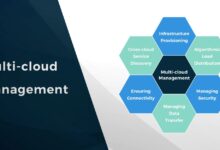Cloud business software: Unlocking 7 Cloud Business Software Secrets for Explosive Growth
Embark on a journey to understand the transformative power of cloud business software. This guide unveils essential insights, empowering your organization for unprecedented success in the digital age.
The Unstoppable Rise of Cloud Business Software

The landscape of business operations has been dramatically reshaped by the advent and widespread adoption of cloud computing. At its core, cloud business software refers to applications and services delivered over the internet, offering unparalleled flexibility, scalability, and accessibility. Unlike traditional on-premise software, which requires significant upfront investment in hardware and IT infrastructure, cloud-based solutions operate on a subscription model, allowing businesses to pay only for what they use. This shift has democratized access to powerful tools, enabling even small startups to leverage sophisticated technologies previously only accessible to large enterprises.
The benefits are multifaceted and profound. Businesses can access their applications and data from anywhere with an internet connection, fostering remote work capabilities and enhancing collaboration among distributed teams. Updates and maintenance are typically handled by the service provider, freeing up internal IT resources and reducing operational overhead. Furthermore, the inherent scalability of cloud solutions means that businesses can easily adjust their resource allocation to meet fluctuating demands, a critical advantage in today’s dynamic market.
Defining Cloud Business Software: Beyond the Buzzword
Cloud business software isn’t a monolithic entity; it encompasses a vast array of applications designed to streamline and optimize various business functions. These can range from customer relationship management (CRM) and enterprise resource planning (ERP) systems to project management tools, human resources management systems (HRMS), accounting software, and communication platforms. The common thread is their delivery model: accessed via the internet, hosted on remote servers, and managed by a third-party provider.
Software as a Service (SaaS): This is the most common model, where users access applications through a web browser or a dedicated client.Examples include Salesforce for CRM, Google Workspace for productivity, and Slack for communication.Platform as a Service (PaaS): PaaS provides a platform for developers to build, deploy, and manage applications without the complexity of managing the underlying infrastructure.Infrastructure as a Service (IaaS): IaaS offers virtualized computing resources over the internet, such as servers, storage, and networking.This provides the most flexibility but requires more technical expertise.The Evolution from On-Premise to the CloudThe transition from traditional, on-premise software to cloud-based solutions represents a fundamental paradigm shift.Historically, businesses purchased software licenses and installed them on their own servers.This model entailed substantial capital expenditure, ongoing maintenance costs, and the need for dedicated IT staff to manage the infrastructure.
.Security, backups, and disaster recovery were also the sole responsibility of the organization.The cloud fundamentally alters this equation by shifting the burden of infrastructure management to the provider.This allows businesses to focus on their core competencies rather than IT complexities.The agility gained from this shift is immense, enabling faster deployment of new functionalities and quicker adaptation to market changes..
Unlocking Efficiency: Streamlining Operations with Cloud Solutions
One of the most compelling reasons businesses migrate to cloud business software is the significant boost in operational efficiency. By automating manual processes, centralizing data, and facilitating seamless communication, these tools empower organizations to do more with less, freeing up valuable time and resources.
Automating Repetitive Tasks
Many business processes, from invoicing and payroll to customer follow-ups and data entry, involve repetitive tasks that are prone to human error and consume considerable employee time. Cloud-based software, particularly through features like workflow automation and integration capabilities, can automate these tasks. For instance, a CRM system can automatically send follow-up emails to leads based on predefined triggers, or an accounting solution can automatically generate invoices from sales orders. This not only reduces the risk of errors but also allows employees to focus on more strategic and value-added activities, such as customer engagement and business development.
cloud business software – Cloud business software menjadi aspek penting yang dibahas di sini.
Centralizing Data and Enhancing CollaborationA significant challenge for many businesses is data fragmentation – information scattered across various spreadsheets, disparate databases, and individual hard drives.Cloud business software provides a centralized repository for critical business data, making it accessible to authorized users from any location.This unified data view is crucial for informed decision-making.Furthermore, cloud platforms are inherently designed for collaboration.
.Teams can work on documents simultaneously, share project updates in real-time, and communicate seamlessly through integrated messaging and video conferencing tools.This fosters a more connected and productive work environment, regardless of geographical distribution.Consider the impact on project management: instead of endless email chains and version control nightmares, a cloud-based project management tool allows all stakeholders to see the latest status, assigned tasks, and deadlines in one place..
Improving Workflow Management
Effective workflow management is the backbone of any efficient organization. Cloud business software offers sophisticated tools to design, implement, and monitor workflows. This includes features for task assignment, progress tracking, approval processes, and performance analytics. By visualizing and optimizing workflows, businesses can identify bottlenecks, streamline processes, and ensure that tasks are completed in a timely and efficient manner. For example, a marketing team can use a cloud-based platform to manage their content creation workflow, from ideation and drafting to review and publication, ensuring a consistent and high-quality output.
“The cloud is not just a place to store your data; it’s a platform for innovation and collaboration that drives business agility.” – AnonymousThe Power of IntegrationThe true magic of many cloud business software solutions lies in their ability to integrate with other applications.This creates a connected ecosystem where data flows seamlessly between different departments and functions.For instance, integrating a CRM with an e-commerce platform can automatically update customer records when an order is placed, while integrating accounting software with a project management tool can streamline billing and expense tracking.
.This interconnectedness eliminates data silos, reduces manual data re-entry, and provides a holistic view of business operations.Customer Relationship Management (CRM) systems, when integrated with marketing automation tools, can significantly improve lead nurturing and conversion rates..
Scalability and Flexibility: Growing with the Cloud
The ability to scale operations up or down in response to market demands is a critical competitive advantage. Cloud business software offers unparalleled scalability and flexibility, allowing businesses to adapt quickly without significant capital investment or lengthy implementation cycles.
On-Demand Resource Allocation
Traditional IT infrastructure often requires over-provisioning to handle peak loads, leading to underutilization and wasted resources during slower periods. Cloud solutions, however, operate on an on-demand model. Businesses can provision additional computing power, storage, or user licenses as needed and scale back when demand decreases. This pay-as-you-go model ensures that companies are only paying for the resources they actively use, optimizing cost-efficiency. This is particularly beneficial for businesses with seasonal fluctuations or those experiencing rapid growth.
Adapting to Market Changes
The business environment is constantly evolving, with new trends, technologies, and competitive pressures emerging regularly. Cloud-based software provides the agility needed to adapt to these changes. New features and functionalities are often rolled out by cloud providers, which businesses can adopt quickly. Furthermore, the ease with which cloud applications can be deployed and integrated allows businesses to pivot their strategies and introduce new products or services with greater speed and less risk. For example, a company looking to expand into a new geographical market can quickly deploy localized versions of their cloud applications without needing to set up new physical infrastructure.
cloud business software – Cloud business software menjadi aspek penting yang dibahas di sini.
Supporting Remote and Hybrid Workforces
The rise of remote and hybrid work models has made cloud business software indispensable. These solutions enable employees to access their work tools and data from anywhere, at any time, using any device with an internet connection. This not only supports flexibility but also enhances productivity and employee satisfaction. Cloud-based collaboration tools, project management software, and communication platforms are essential for maintaining team cohesion and operational continuity in a distributed workforce. The ability to securely access sensitive company data from a home office or a coffee shop is a testament to the security and accessibility offered by modern cloud solutions.
Cost-Effectiveness: Smarter Spending on Business Software
While the initial perception of cloud solutions might be that they are more expensive due to subscription fees, a closer examination often reveals significant long-term cost savings and a more predictable expenditure model compared to traditional on-premise software.
Reduced Capital Expenditure
One of the most significant cost advantages of cloud business software is the elimination of substantial upfront capital expenditure. Instead of purchasing expensive hardware, software licenses, and installation services, businesses pay a recurring subscription fee. This shifts IT spending from a capital expense (CapEx) to an operational expense (OpEx), which can be more manageable for budgeting and cash flow. This is particularly impactful for startups and small to medium-sized businesses (SMBs) that may not have the financial resources for large upfront investments.
Lower Total Cost of Ownership (TCO)
Beyond the initial purchase, on-premise software incurs ongoing costs related to hardware maintenance, energy consumption, IT staff salaries for system administration, software updates, and potential downtime due to hardware failures. Cloud providers absorb many of these costs. They manage the infrastructure, perform regular maintenance, ensure uptime, and handle software updates and security patches. This leads to a lower Total Cost of Ownership (TCO) over the lifespan of the software, making cloud solutions a more economically sound choice in the long run. Research consistently shows that cloud deployments can reduce IT infrastructure costs by a significant margin.
Predictable Subscription Models
Subscription-based pricing for cloud software offers a predictable cost structure. Businesses can forecast their IT expenses more accurately, as the subscription fees are typically fixed for a given period. This predictability is invaluable for financial planning and budgeting, allowing for better resource allocation and strategic investment decisions. Unlike unexpected hardware failures or costly upgrade cycles associated with on-premise solutions, cloud costs are generally more stable and transparent.
Elimination of Hidden Costs
On-premise deployments often come with hidden costs, such as the need for specialized IT personnel to manage complex systems, the cost of physical space to house servers, and the expense of regular backups and disaster recovery plans. Cloud providers bundle these services into their subscription fees, effectively eliminating these hidden costs for the end-user. The responsibility for data security, backups, and disaster recovery is largely borne by the cloud provider, offering peace of mind and further cost savings.
Enhanced Security and Reliability in the Cloud
Concerns about data security and system reliability have historically been a barrier to cloud adoption. However, modern cloud providers invest heavily in state-of-the-art security measures and robust infrastructure, often exceeding the capabilities of individual businesses.
Robust Security Infrastructure
Reputable cloud providers employ multi-layered security strategies, including advanced firewalls, intrusion detection and prevention systems, encryption for data in transit and at rest, and regular security audits. They adhere to stringent industry compliance standards (e.g., ISO 27001, SOC 2) and employ dedicated security professionals to monitor and protect their infrastructure 24/7. For many businesses, especially SMBs, the security posture of a major cloud provider is significantly stronger than what they could achieve with their own in-house IT resources. Amazon Web Services (AWS) Security, for example, details their comprehensive security practices.
cloud business software – Cloud business software menjadi aspek penting yang dibahas di sini.
High Availability and Disaster Recovery
Cloud platforms are designed for high availability, meaning that services are accessible virtually all the time. They utilize redundant infrastructure across multiple data centers, ensuring that if one data center experiences an outage, services can seamlessly failover to another. This significantly reduces the risk of downtime. Furthermore, cloud providers offer robust disaster recovery solutions, ensuring that data can be quickly restored in the event of a catastrophic event. This level of resilience is often prohibitively expensive and complex for individual businesses to implement on their own.
Regular Updates and Patching
Keeping software and systems up-to-date with the latest security patches is crucial for preventing vulnerabilities. Cloud providers automatically handle these updates and patches for their services. This ensures that businesses are always running on the most secure and up-to-date versions of their software, reducing the risk of exploits and cyberattacks. This proactive approach to security is a major advantage over managing on-premise systems, where updates can be time-consuming and disruptive.
Data Privacy and Compliance
Cloud providers are increasingly focused on data privacy and helping businesses meet their regulatory compliance obligations. Many offer features and certifications that assist with compliance requirements for various industries and regions (e.g., GDPR, HIPAA). It’s essential for businesses to understand the shared responsibility model for security and compliance when using cloud services, ensuring they configure their applications and manage user access appropriately.
Choosing the Right Cloud Business Software for Your Needs
With the vast array of cloud business software options available, selecting the right solutions can seem daunting. A strategic approach is key to ensuring that your investments align with your business objectives.
Assess Your Business Needs and Goals
Before diving into specific software options, conduct a thorough assessment of your business’s current challenges, inefficiencies, and future goals. What specific problems are you trying to solve? What processes need improvement? What are your long-term objectives? Understanding these fundamental questions will help you identify the types of software that will provide the most value. For example, if customer retention is a key goal, a robust CRM system will be a priority.
Consider Integration Capabilities
As mentioned earlier, the ability of different software solutions to integrate with each other is crucial for creating a cohesive and efficient business ecosystem. Prioritize software that offers open APIs or pre-built integrations with the other tools you currently use or plan to adopt. This will prevent data silos and ensure seamless workflows across your organization. Compatibility with your existing IT infrastructure should also be a consideration.
Evaluate Vendor Reputation and Support
The reliability and support offered by a software vendor are critical factors. Research the vendor’s reputation, read customer reviews, and inquire about their customer support services. Do they offer 24/7 support? What are their typical response times? A responsive and knowledgeable support team can be invaluable when you encounter issues or need assistance. Look for vendors with a proven track record of innovation and customer satisfaction.
Understand Pricing Models and Scalability Options
Cloud software pricing can vary significantly. Understand the different pricing tiers, what features are included in each, and how pricing scales as your business grows. Some vendors offer tiered pricing based on the number of users, features, or usage volume. Ensure that the pricing model is transparent and that you can easily scale your subscription up or down as your needs change. Be wary of hidden fees or complex contract terms.
cloud business software – Cloud business software menjadi aspek penting yang dibahas di sini.
Pilot Testing and Free Trials
Most cloud software providers offer free trials or demo versions of their products. Take advantage of these opportunities to test the software in a real-world scenario before committing to a purchase. This allows you to evaluate the user interface, functionality, and overall fit with your team’s workflow. Involve key stakeholders in the testing process to gather diverse feedback. A pilot program can save significant time and resources in the long run.
The Future of Cloud Business Software: Trends and Innovations
The evolution of cloud business software is far from over. Emerging technologies and evolving business needs are continuously shaping its future, promising even greater capabilities and efficiencies.
Artificial Intelligence (AI) and Machine Learning (ML) Integration
AI and ML are increasingly being integrated into cloud business software to provide advanced analytics, predictive insights, and intelligent automation. From AI-powered chatbots that enhance customer service to ML algorithms that optimize marketing campaigns and detect fraudulent transactions, these technologies are transforming how businesses operate. Expect to see more sophisticated AI-driven features that personalize user experiences, automate complex decision-making, and uncover hidden patterns in data.
Enhanced Data Analytics and Business Intelligence
The ability to extract actionable insights from vast amounts of data is paramount. Cloud platforms are becoming powerful hubs for data analytics and business intelligence (BI). Advanced BI tools integrated with cloud software will enable businesses to visualize data, identify trends, monitor key performance indicators (KPIs), and make more informed strategic decisions. The democratization of data analytics means that more users within an organization can access and interpret data, fostering a data-driven culture.
Low-Code/No-Code Development Platforms
Low-code and no-code platforms are empowering business users with limited or no traditional programming skills to build and customize applications. These platforms, often delivered via the cloud, significantly speed up application development and allow businesses to create tailored solutions to meet specific needs without relying heavily on IT departments. This fosters agility and innovation by enabling faster prototyping and deployment of new business tools.
Increased Focus on Cybersecurity and Privacy
As data breaches and privacy concerns continue to be a major focus, cloud providers are investing even more heavily in advanced cybersecurity measures and transparent privacy policies. Expect continued advancements in areas like zero-trust security models, advanced threat detection, and data anonymization techniques. Compliance with evolving global privacy regulations will remain a top priority for cloud service providers and their customers.
Edge Computing and Hybrid Cloud Models
While cloud computing remains dominant, there’s a growing trend towards hybrid cloud models, which combine public cloud services with private cloud or on-premise infrastructure. Additionally, edge computing, which processes data closer to its source, is gaining traction for applications requiring low latency. These evolving architectures offer businesses greater flexibility and control over their data and applications, allowing them to choose the best environment for specific workloads. The integration of these models with core cloud business software will offer new possibilities for efficiency and performance.
Frequently Asked Questions about Cloud Business Software
What is the primary benefit of cloud business software?
cloud business software – Cloud business software menjadi aspek penting yang dibahas di sini.
The primary benefit is enhanced flexibility and accessibility. Businesses can access their applications and data from anywhere, at any time, facilitating remote work and improving collaboration. It also offers scalability, cost-effectiveness, and reduced IT management overhead.
Is cloud business software secure?
Yes, reputable cloud providers invest heavily in state-of-the-art security measures, often exceeding what individual businesses can afford. They employ multi-layered security, encryption, and adhere to strict compliance standards. However, security is a shared responsibility, and users must also implement strong access controls and practices.
How does cloud business software affect IT costs?
Cloud business software typically reduces upfront capital expenditure by shifting from a purchase model to a subscription model. While there are ongoing subscription fees, the total cost of ownership (TCO) is often lower due to reduced hardware maintenance, energy costs, and IT staff requirements. It also offers predictable budgeting.
Can I integrate cloud business software with my existing systems?
Most modern cloud business software is designed with integration capabilities. They often offer APIs or pre-built connectors to integrate with other cloud services or on-premise systems, allowing for seamless data flow and streamlined workflows.
What is the difference between SaaS, PaaS, and IaaS?
cloud business software – Cloud business software menjadi aspek penting yang dibahas di sini.
SaaS (Software as a Service) provides ready-to-use applications. PaaS (Platform as a Service) offers a platform for developing and deploying applications. IaaS (Infrastructure as a Service) provides virtualized computing resources like servers and storage. Each offers different levels of control and management.
The transformative power of cloud business software is undeniable. From streamlining operations and fostering collaboration to offering unparalleled scalability and cost-effectiveness, these solutions are no longer a luxury but a necessity for businesses aiming to thrive in the modern digital economy. By understanding the core benefits, carefully selecting the right tools, and staying abreast of emerging trends, organizations can harness the full potential of the cloud to drive innovation, achieve greater efficiency, and secure a competitive edge.
Recommended for you 👇
Further Reading:









